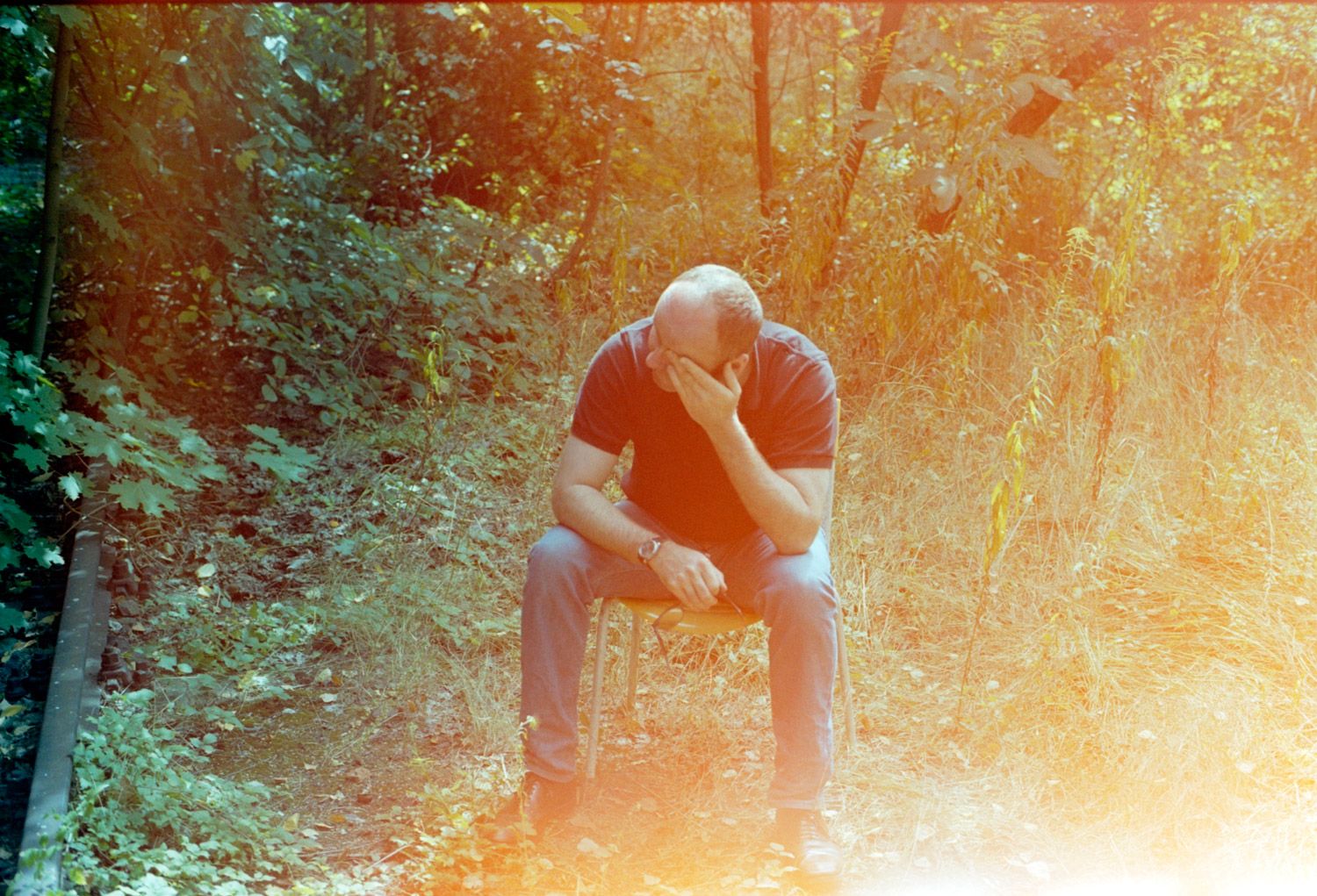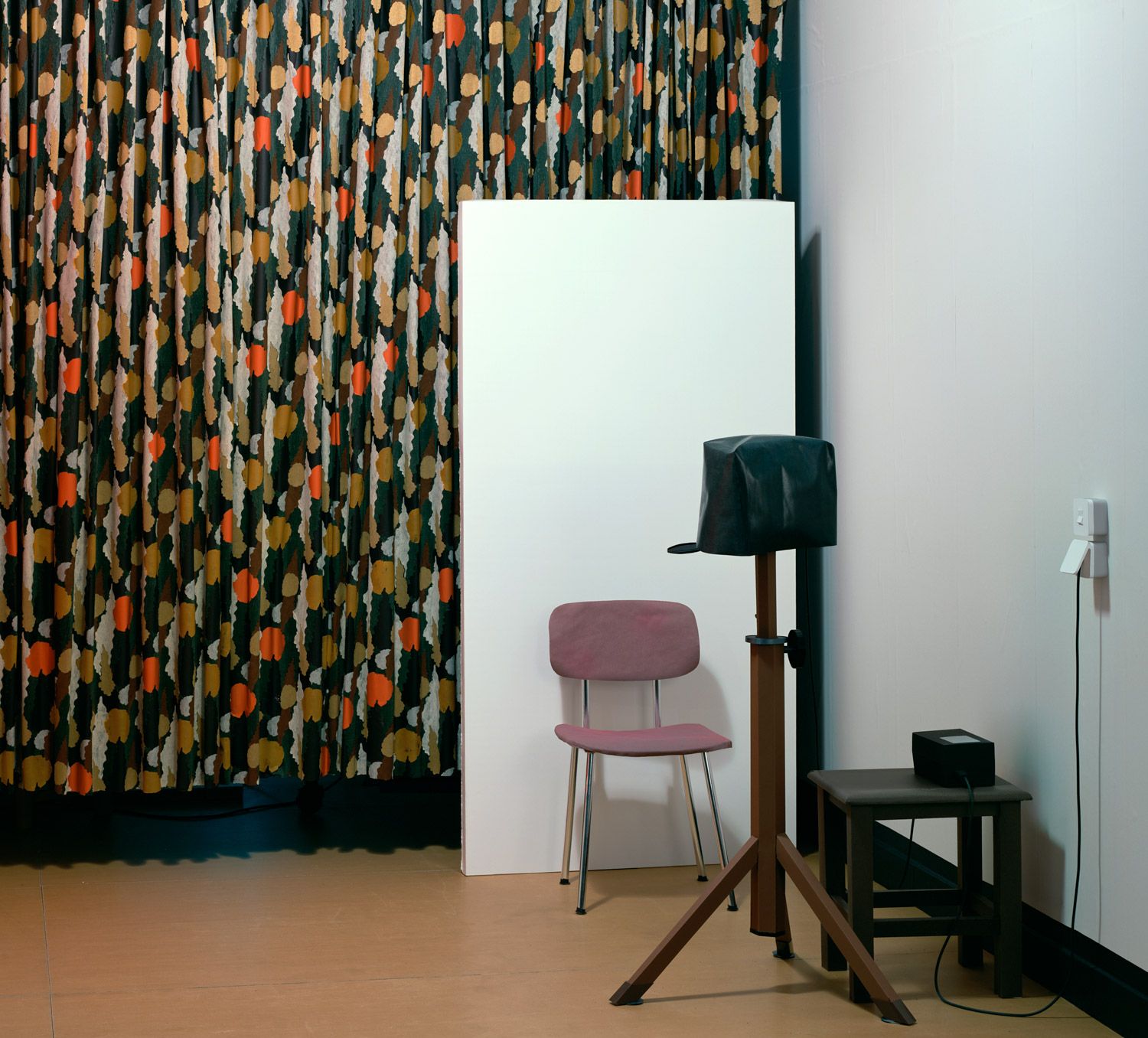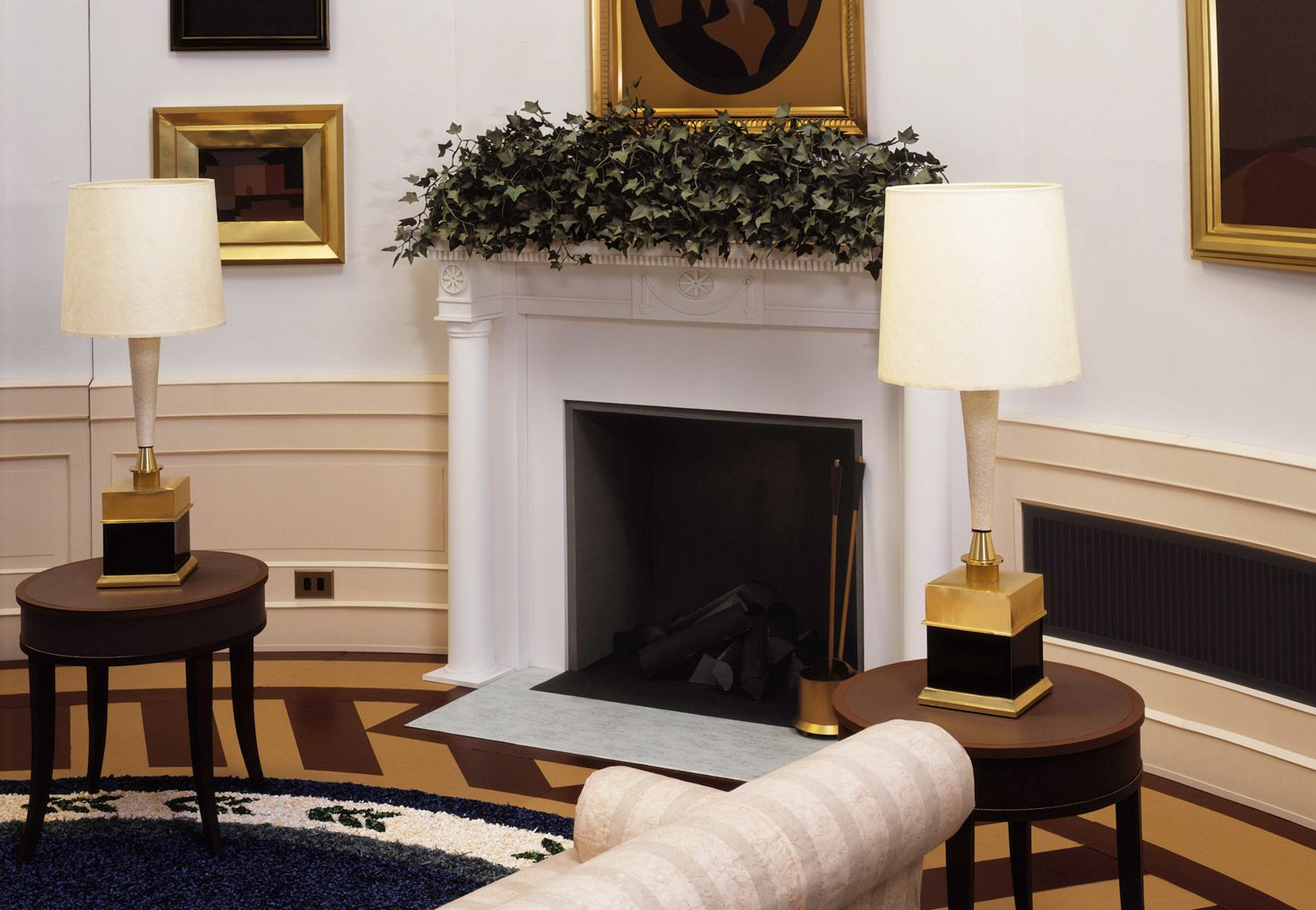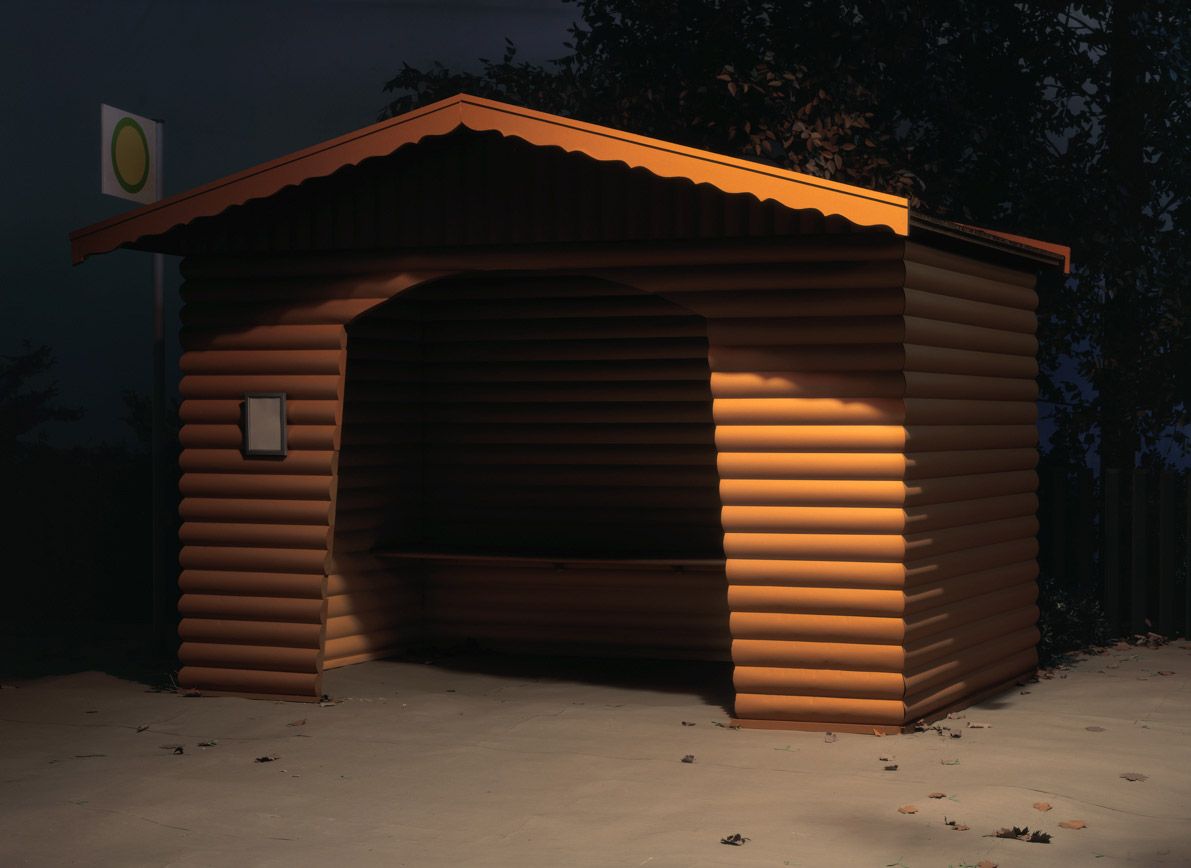Memory Animation

“Our knowledge of images is my material.” An interview with artist THOMAS DEMAND on his medium and preparation for his 2009 exhibition at the Neue Nationalgalerie, Berlin.
BRIGITTE WERNEBURG: It took a while for you to exhibit in Berlin. Was Udo Kittelmann becoming the new museum director a major factor in making it happen?
THOMAS DEMAND: It wasn’t me who requested it – and it doesn’t go without saying that I should exhibit here. I have a long professional history of collaborating, and probably by now a kind of friendship, with Udo Kittelmann. He’s been interested in my work for a while, and then, in 2006, I was asked to create a series of works in reaction to Max Beckmann’s “Apocalypse” lithograph series (1941–42) for Frankfurt’s Museum für Moderne Kunst, where Udo was then director. We’ve stayed in contact ever since.
The request for you to exhibit here in Berlin came from the public. You had your first solo exhibition in Germany in 2002 at the Lenbachhaus in Munich. In 2005, you had a big exhibition at the MoMA in New York featuring 26 works. How many will you show now in Berlin?
There will be 38 works exhibited. We’re showing some of my first images from 1992–93 all the way through to five brand new works. The difficulty obviously lies in the last four to five years. The exhibition is called “Nationalgalerie,” and it’s a thematic retrospective. But you should read the title in quotation marks, because it isn’t an exhibition that teaches you about the past 60 years of the Federal Republic of Germany, the 20 years since the fall of the Wall, or the Bundestag elections.

What is the idea, then?
Every big exhibition begins with the selection of the works, so I started by contemplating the established criteria. That’s why the name of the building seemed to be a good starting point for me. Imagine entering your name into Google, and getting all possible results, including a rabbit-breeding club in the Niederrhein, and other things that you wouldn’t necessarily associate with “Werneburg.” We can’t respond to all the associative concepts of “Nationalgalerie,” because the range of images that we can choose from is limited to my work. But also because my own work has to do with our conception of history in general, which is an interesting context for a retrospective. What I want to say is that the associative combination of images demonstrates a thoroughly intimate methodology. And because the outcome doesn’t result from predetermined premises, but rather from looking back at my work from the last fifteen years, it’s definitely going to bring forward a very subjective impression.
Will that also be the case with the new work?
I began by looking at images that fit the selection criteria of having a connection to Germany, which had been the case for about 30 to 40 percent of my body of work. In addition to all the well-known motifs, this included many pieces that were more private. But at the same time, among them were some more general images, like Lichtung (2003), which everyone abroad would probably identify as having a typically German motif. I realized, however, that I still wanted to show new works. For the most part, the images came out of my archives. They deal with themes that once stood out for me, but then faded out of sight.
Is this filter a kind of guiding principle throughout your work? Because the themes and motifs that you have dealt with over the years are actually quite diverse.
I am still searching for the guiding principle myself – it isn’t a strategic game. If you start when you’re 22, you don’t know what will interest you in 30 years. Rather, the guiding principle finds itself through the course of action. Taking pictures of pictures, for example, instead of presenting images that people comprehend as reality.
But what about the “Embassy” series, which comprises images of the Nigerian Embassy in Rome? There weren’t any previous images for that series.
The exception affirms the rule. Since working in reaction to Beckmann – whose “Apocalypse” series depicted Biblical scenes – I’ve become more preoccupied with the relationship between image and text. With “Embassy,” I decided to deal with the place where they supposedly found the proof that Saddam Hussein had weapons of mass destruction. Similar to the way Honoré Daumier illustrated Don Quixote, I wanted to show this place with images that could have sprung out of my imagination, but that also appeared so believable in their specific form, and in how the space was presented, that they could pass for reportage.
Your last piece, which got a lot of attention, was the five-part series “Presidency,” which you did for The New York Times Magazine [see Zac Rose in this issue of 032c] on the occasion of the 2008 presidential election. What did this assignment mean to you?
I was fascinated by images of the Oval Office, which I happened to see for the first time in The New York Times Magazine – the mother of all magazines, which gives a huge amount of attention to the illustration of its journalistic content. It’s a source for my work, and when that source comes to me and asks if I would like to do something for them, I can’t say no. And I wasn’t asked because I’m a more or less known artist who would therefore make the publication more prestigious; I was asked because my work possesses very specific characteristics that are needed for the text – because normal images wouldn’t really work. The text is very basic: an essay on the abstract quality of the origin and development of the US Constitution, and its blatant disfigurement by the Bush administration. There, it was clearly understood why I take these kinds of pictures.

Why?
Here’s a very simple example: You organize a workshop in Argentina and ask the students if they can draw the tunnel in which Lady Di died. Everyone can kind of draw the entry to the tunnel in Paris. But they can obviously do it, not because they were there, but because they’ve seen pictures and videos of the accident. This knowledge is something very enticing to an artist; it’s like the plaster an artist once would have used to make a sculpture of Daphne.
So for your photography, you construct models of knowledge rather than images of space?
What interests me in the images is that you and I have seen them, or that I know that you could have seen them. Even if you haven’t seen them, you still know that I, and other people, have. That probably sounds like Donald Rumsfeld, or even trivial, but it makes a big difference whether you go into an exhibition and see things that you never could have seen before, or whether you find things that seem to be familiar, that provoke the memory. I’m interested in how these images get to me. What path do they take? Why do they get stuck in my head?
Something that’s different from your earlier works, when there was always a single image, is that you have begun to show series. Is the motif becoming more important than the image itself?
“Nationalgalerie” will mostly exhibit single images. But at a certain point a detrimental reciprocal effect was canonized in the reception of my work – which had to do with me, myself. I thought I should shift the attention to the objects that exist in front of the camera. So I started making films, liquefying images – think about my animation, Regen. There, I wanted to set aside the emphasis on the photographic surface, and approach the gaze of the audience with the experience that I have when I go through the model. I pursue something similar in the multipart illustrations of the spaces in “Embassy,” “Klause,” and “Presidency.”

The surface of your images is very noticeably clean, neat, very photogenic.
Obviously my images are photogenic. That’s why I make them. When you say “clean and neat,” a judgmental coloring comes into play. But when you shut off this recorder, you will also leave a lot out. This has to do with the techniques of our memory: We value certain things more than we do others, otherwise we would go crazy. And when I make those things visible through my eccentric way of copying, it’s fundamentally about the question: what does memory need to become animated? Because we construct the images for ourselves in a new way every time. It should be clear to the viewer that he’s looking at a mockup, which delivers just the right amount of information needed to recognize the image or to try to understand it.
Is photography necessary for that these days? Is it more important as an art form today than ever before, as the critic Michael Fried, who has extensively engaged with your work, says?
Photography, some might say, is still the visually predominant medium of our time. When you look at painting, you immediately draw comparisons. Does it look like photography? Was it painted using a photograph? Everything has to be measured up to the photographic image. In spite of that, there has been very little theoretical discourse about it in recent years. That’s why Michael Fried wants to cut in with the kind of knowledge of someone who comes out of painting. He applies the canon of painting criticism, in which he drives the theoretical analysis, to a certain type of photography, such as mine.
The writer Botho Strauß has composed short texts for each of your works as a sort of image key. Does his name push “Nationalgalerie” into a conservative corner?
Must we cultivate this kind of dichotomy? First of all, he’s a brilliant writer! That’s the reason I invited him. And who says that he and I have to have the same political stance? That isn’t even dealt with in the exhibition. It isn’t an election event. Given the subtleness of his thoughts, to qualify him as “conservative” would be one-dimensional. But even visitors who think these categories are crucial could use a bit of a challenge. You have nothing to lose by reading up on it.
Interview by BRIGITTE WERNEBURG, with additional reporting by CHRISTY LANGE